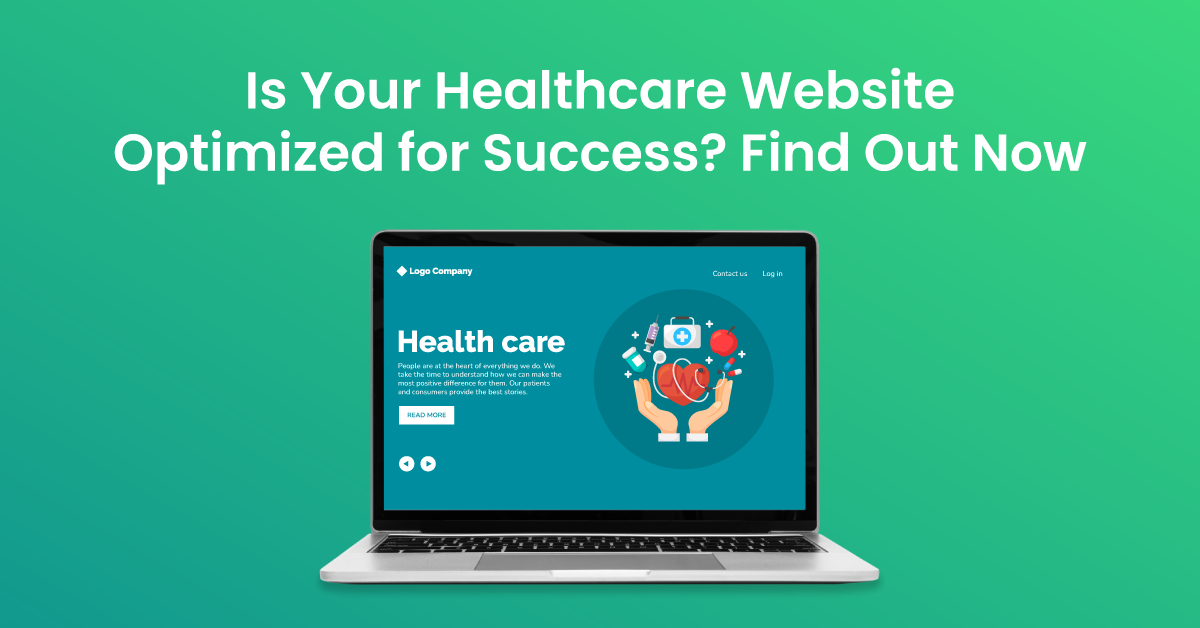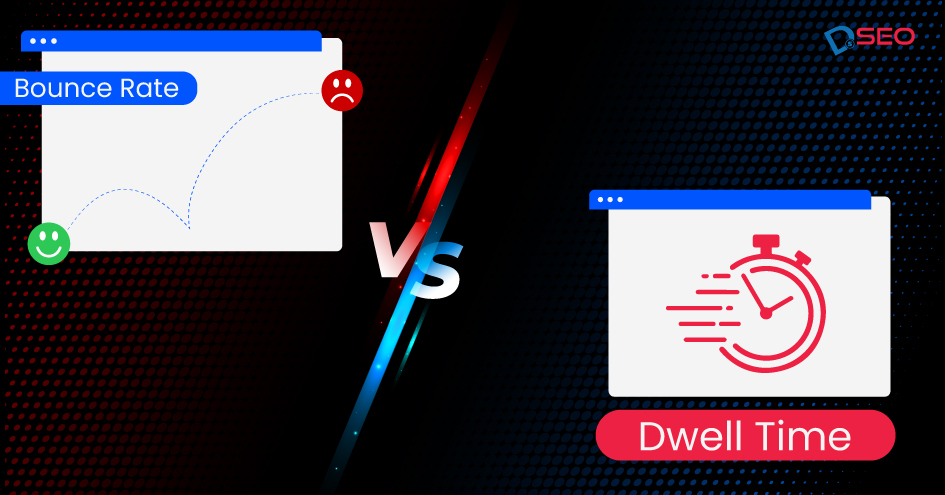
Is Your Healthcare Website Optimized for Success? Find Out Now
July 13, 2023 / SEARCH ENGINE OPTIMIZATION
Your website serves as a virtual front door, welcoming patients and providing them with vital information. But more than simply having a website is required. To thrive in the competitive healthcare industry, consider optimizing your website for success.
Why is healthcare SEO so important? Well, think about how you search for information online. When people need medical services, they turn to search engines like Google. If your website needs to be correctly optimized, it may not appear in relevant search results, making it challenging for potential patients to find you. Moreover, a slow-loading or unresponsive website can frustrate visitors, causing them to leave and seek services elsewhere.
In the following sections, we will explore the essential elements of website optimization for healthcare organizations. Get ready to have a strong online presence to attract more patients!
Assessing Your Current Website Performance
When optimizing your healthcare website for success, evaluating its current performance is essential. By assessing key aspects of your website, you can specify areas that require improvement and create a roadmap for optimization. Let’s explore four crucial factors to consider during this evaluation process.
1.1 Website Loading Speed
One of the most critical factors that can make or break a website’s success is its loading speed. Now a days, users expect online websites to load quickly. Visitors may become impatient and navigate away if your website takes too long to load, leading to lost opportunities. Use online tools like Google PageSpeed Insights or GTmetrix to analyze your website’s loading speed. If the results indicate sluggish performance, it’s time to take action. Optimize images by compressing them without compromising quality, minimize the use of unnecessary plugins, and leverage browser caching to improve loading times.
1.2 Mobile Responsiveness
With majority of internet users opening websites through mobile, having a responsive website is vital. A mobile-responsive design ensures that your website adapts seamlessly to different screen sizes, providing a user-friendly experience on smartphones and tablets. Test your website’s mobile responsiveness by accessing it on various devices. Look for layout issues, distorted images, or elements that are difficult to navigate. If your website isn’t mobile-friendly, consider implementing a responsive layout or making a particular mobile version to serve mobile users.
1.3 User Experience and Navigation
A positive user experience is vital to keeping visitors engaged on your website. Evaluate your website’s user experience and navigation by putting yourself in a patient’s shoes. Is the layout clear and intuitive? Can users immediately find the data they need? Assess the organization of your content, the visibility of your contact information, and the simplicity of your navigation menus. Ensure your website is straightforward, with clear labels and logical menu structures. Enhance the user experience by optimizing forms and ensuring they are easy to fill out.
1.4 Search Engine Visibility
A well-optimized website is essential for improving your visibility in search engine results. Assess your website’s search engine visibility by conducting a keyword analysis. Are you targeting the right keywords? Are they strategically incorporated into your website’s content and meta tags? Analyze your current search engine rankings and consider conducting competitor research to identify opportunities for improvement. Implementing proper on-page optimization techniques, including keyword optimization, meta-tag optimization, and creating high-quality, relevant content, can boost your search engine visibility and attract more organic traffic.
Optimizing Website Speed for Better Performance
To enhance the performance of your website, one of the crucial areas to focus in healthcare SEO is its website speed. A slow-loading website can drive visitors away and negatively impact user experience. This section will explore four key strategies to optimize your website speed and ensure better performance.
2.1 Compressing Images and Files
Images and large files can significantly slow down your website’s loading speed. Compressing images and files without sacrificing quality can decrease their file size and enhance loading times. Use image compression tools like TinyPNG or JPEGmini to compress photographs before uploading. Additionally, consider using file compression techniques such as Gzip to minimize the size of HTML, CSS, and JavaScript files.
2.2 Minimizing HTTP Requests
Every element on your website, including images, scripts, and stylesheets, requires a separate HTTP request to load. The more requests your website makes, the longer it takes to open. Reduce the number of HTTP requests by connecting multiple files into one whenever possible. Concatenating CSS and JavaScript files and using image sprites for icons and graphics can significantly decrease the number of requests and enhance loading speed.
2.3 Enabling Browser Caching
Browser caching allows web browsers to store certain website elements locally on a user’s device. When visitors return to your website, their browser can retrieve these cached elements instead of downloading them again, resulting in faster loading times. Enable browser caching by setting the appropriate headers on your server or utilizing caching plugins for popular content management systems (CMS) like WordPress.
2.4 Optimizing Code and Scripts
More efficient or bloated code and scripts can improve your website’s performance. Optimize your code by removing unnecessary spaces, line breaks, or comments. Decrease the sizes of CSS and JavaScript files. Additionally, consider deferring the loading of non-essential scripts, such as tracking codes or social media widgets, to prioritize the loading of critical content.
Enhancing Mobile Responsiveness
A mobile-responsive design allows your website to adapt seamlessly to different screen sizes and devices, providing an optimal browsing experience for mobile users. Let’s explore four key strategies to enhance mobile responsiveness and effectively engage your audience.
3.1 Responsive Web Design
Responsive web design is the foundation of mobile responsiveness. It involves designing and developing your website in a way that allows its layout and elements to adjust dynamically based on the user’s screen size. This ensures your website looks and functions flawlessly on smartphones, tablets, and other mobile devices. Embrace a responsive web design approach using media queries, adjustable grids, and fluid to create a visually appealing and user-friendly experience across all devices.
3.2 Mobile-Friendly Navigation
Checking a website on a mobile device can be hard if the navigation menus are not optimized for smaller screens. Simplify your navigation using a hamburger or collapsible menus, which save screen space and provide a user-friendly interface. Ensure that your menu items are easily clickable and distinguishable, allowing users to access different sections of your website effortlessly.
3.3 Touch-Friendly Elements
Mobile users interact with websites through touch gestures. Ensure your website’s elements are touch-friendly by spacing them adequately. Make buttons and links big enough to be effortlessly tapped with a finger. Avoid using small fonts or placing clickable elements too close together, as this can lead to accidental taps and frustration for users.
3.4 Testing Across Multiple Devices
To ensure optimal mobile responsiveness, testing your website across various devices and screen sizes is crucial. Use emulators, simulators, or real devices to view your website and check for layout issues, misalignments, or broken elements. Conduct thorough testing on popular mobile platforms, such as iOS and Android, and various screen sizes, including smartphones and tablets.
Conclusion:
Assessing and optimizing your website’s performance ensures its success using healthcare SEO. To achieve the best results, consider partnering with a trusted SEO agency like Deftsoft. Their expertise can help your medical practice rank #1 for primary treatments and procedures, driving more visibility and success. Today, boost your online presence and attract more patients with Deftsoft’s SEO solutions!









